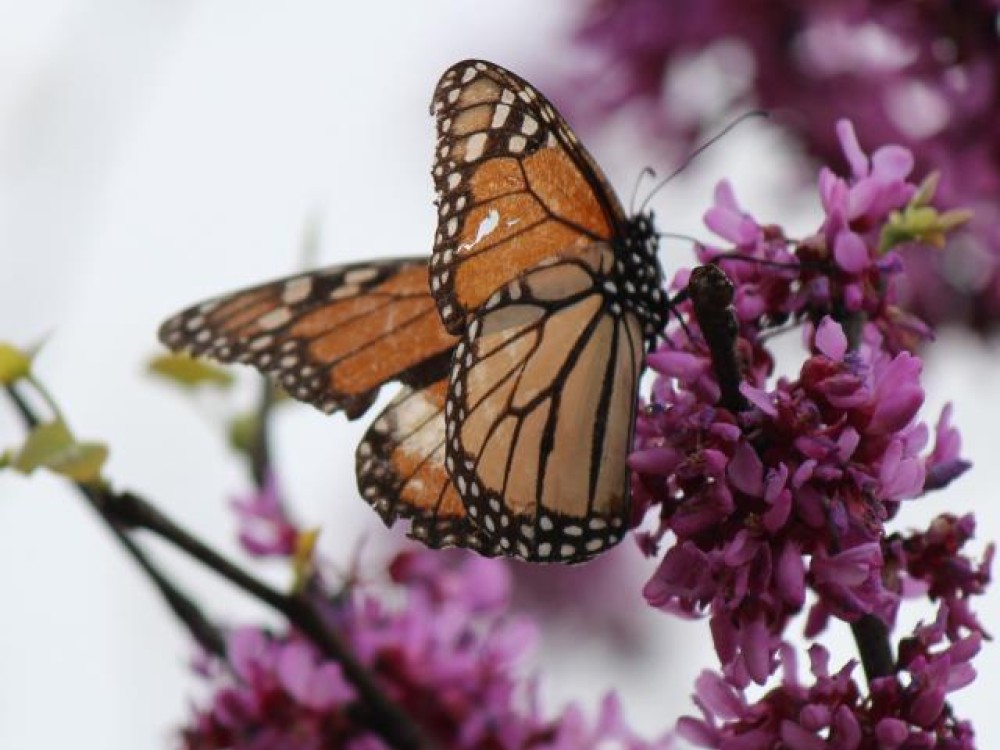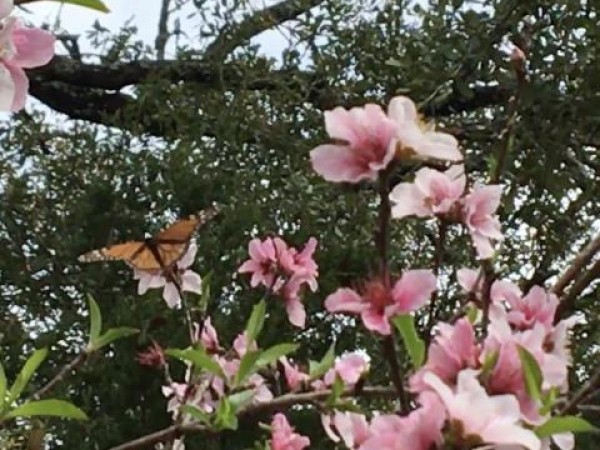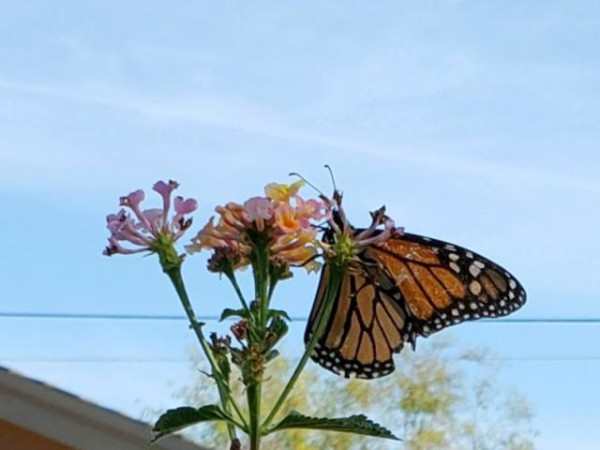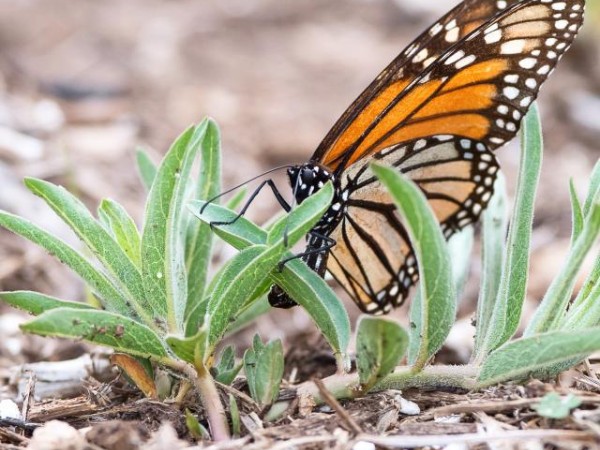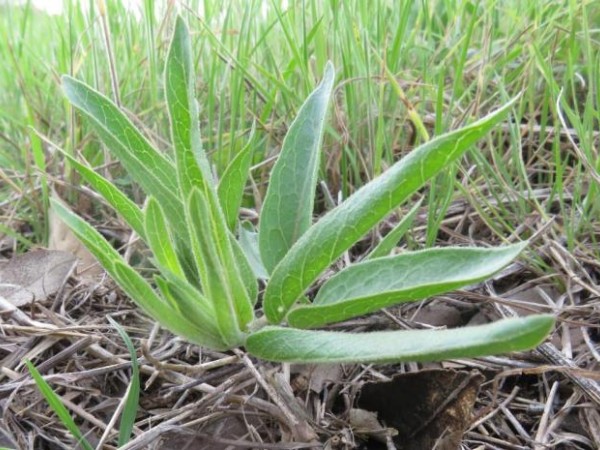Monarch Migration Advances
Eastern Monarch Population Migration News
From Mexico, Estela Romero writes: "As the Monarchs cascade down the Mountain and take flight we begin to say farewell. The town of Angangueo hosted the 28th Farewell to Monarchs Cultural Festival. Celebrations included music, dancing, local art, poetry, and photography, all to say “good-bye”. We look forward to the return of the Monarchs."
Read more of Estela Romero's final letter from the Monarch Butterfly Sanctuaries: A Farewell Festival
The migration’s leading edge has already reached Austin, Texas. Journey North citizen scientists are reporting monarchs with faded wings throughout Texas.
From Dripping Springs, TX: Cindy saw her first monarch at "about 2 o'clock in the afternoon on the peach tree blossoms. The peach trees are blooming two weeks later this year than last. The second butterfly I saw was just flitting through the air in the oak trees." (03/17/2020)
From Marble Falls, TX: Diane saw "One lone traveler crossed my truck windshield to rest in the leafing hackberry tree at 2:45 today.Too far away to see if M or F, just definitely a slightly fade monarch, YIPPEE!! Sorry the pic is not clearer, but through a dirt windshield, very dim/overcast day, ph camera only and a good distance away. But, THRILLS & good chills!! Wildflowers abound, but have not spotted any antelope horn milkweed yet. Maybe just too short to be seen yet above the quickly exploding grasses." (03/17/2020)
Western Monarch Population Migration News
The Gail Morris' writes: "Much needed rain graced California and Arizona this week in a multi-day precipitation event (which is what we call a rainy spell), accompanied by cooler temperatures. This limited monarch movement in the West, but they still appeared on sunny days embedded in the rains."
Read more of Gail Morris' article: More Questions To Ponder, Western Monarchs 2020 Spring Report #3
Signs of Monarch Reproduction
A single monarch butterfly can lay hundreds of eggs. During spring migration, each female leaves a trail of eggs behind her as she travels. Monarchs only live for a few weeks after they begin to reproduce. By the end of April, the butterflies that overwintered in Mexico as well as in overwintering location along the west coast will have reached the end of their lives. The next generation will complete the migration. Those butterflies will be the children of the monarchs that overwintered in Mexico and in California. There were several reports on first monarch eggs sighted as well as first larva sigthted.
From Austin, TX: Katherine snapped this photo of a monarch butterfly ovipositing on Antelope-horns milkweed (Asclepias asperula). 03/14/2020
From Driftwood, TX: Chuck noted, "Our native asperula is still rather small but big enough for a remigrant to find it.The ditch line down the road from our house is typically where we see our first egg. That was the case again this year. A faded male has been hanging out this afternoon around our house. Looking for the few prairie verbeena that are blooming. Still a week or so away from lots more."(03/12/2020)
From Santa Cruz, CA: Adriana found 20 monarch eggs “on my own milkweed which did not get cut back this winter as there were always eggs and caterpillars on it and showy coming up at a nearby school garden got egg bombed also.” (03/13/2020)
From Spring, TX: Grace observed her first larva on 03/16/2020.
From Baton Rouge, LA: Ken reported his first caterpillar on 03/10/2020.
First Milkweed Up
Journney North citizen scientists have found milkweed to be sprouting as far north as latitude 35 and 36 degrees.
From Stillwater, OK: Ray measured his "Asclepias incarnata shoots to be about 4 mm tall." (03/16/2020)
From Chattanooga, TN: Beth reported "newly emerging common milkweed." (03/14/2020)
From Hertford, NC: Andrea found "a few early leaves starting." (03/06/2020)
From the east coast to the west coast, people are still waiting for warmer weather to arrive. Keep watching for milkweed in your area.
Looking For Fun Activities To Do At Home?
Look no further! Journey North has many resources for anyone with a curious mind. This week we feature resources related to the Monarch Life Cycle. Let's all explore together.
Don't Forget Your Observations Provide Valuable Data
Observations contributed by citizen scientists are providing needed data to answer many questions. Please take a moment to go out in your backyard or gaze out your window. Continue to report your monarch observations.
